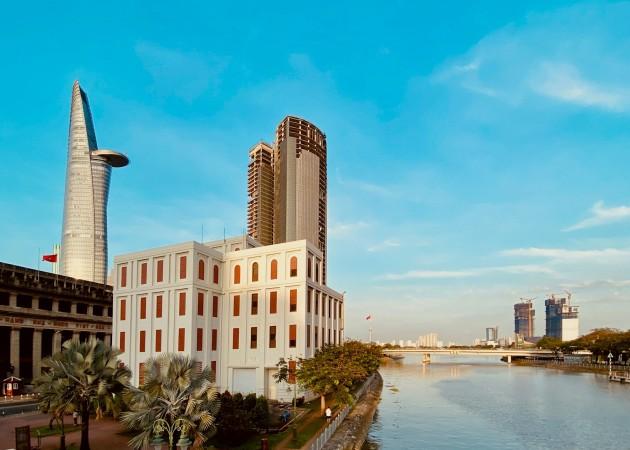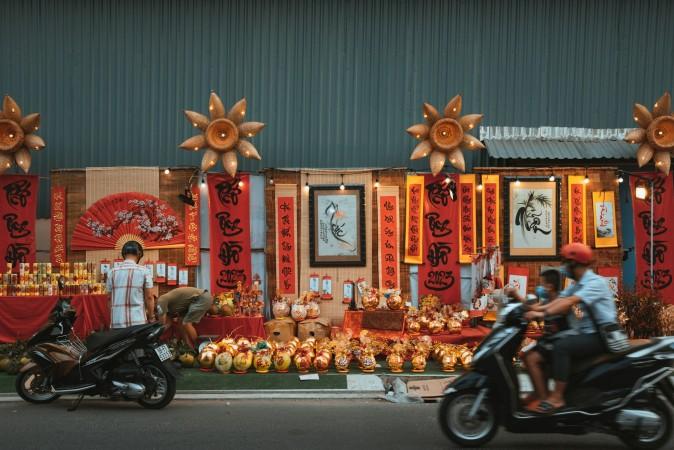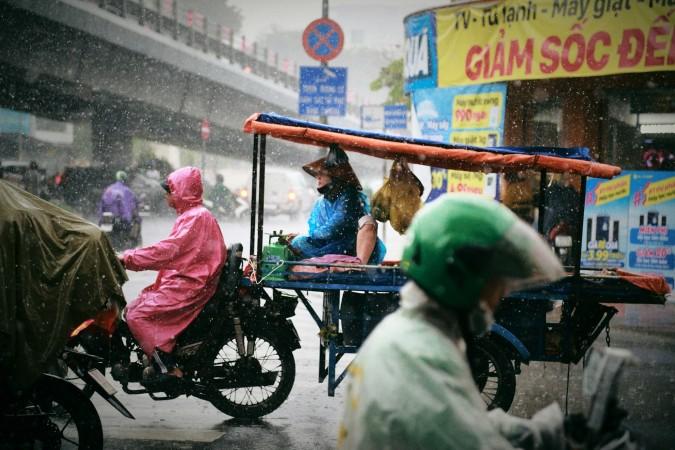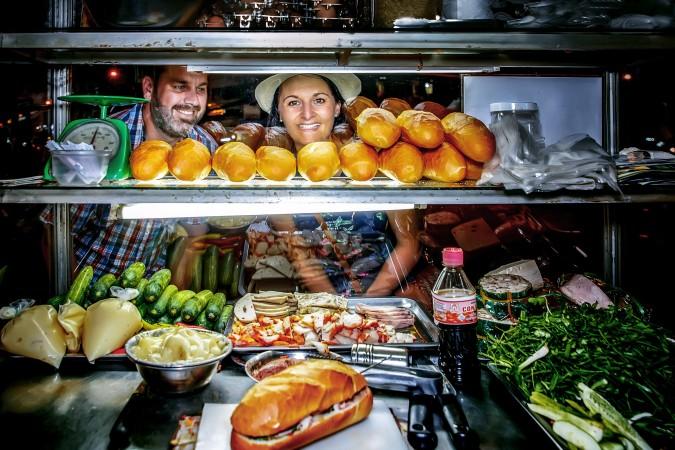Explore Ho Chi Minh - South Vietnam Travel, Asia
Welcome to Ho Chi Minh City, the bustling heart of Southern Vietnam. Formerly known as Saigon, this vibrant metropolis blends rich history with modern dynamism, offering travelers a captivating blend of cultural experiences and urban adventures. Whether you're here for its historical landmarks, delectable cuisine, or lively street scenes, Ho Chi Minh City promises an unforgettable journey into Vietnamese culture.
Population: Approximately 9.4 million in 2021.
Economy: Largest economy center of Vietnam, ranging from finance, trade, construction, and tourism.
Landmarks: Bitexco Financial Tower, Ben Thanh Market, and Cu Chi Tunnels.
Vietnam

Overview of Ho Chi Minh City
History & Cultural Influence
Ho Chi Minh City's history is deeply intertwined with its colonial past and vibrant cultural mosaic. Once a strategic trading port under French rule, remnants of colonial architecture still grace its boulevards. This influence is complemented by the city's diverse cultural heritage, shaped by Chinese, Khmer, and Cham communities over centuries. From the elegant Notre-Dame Cathedral Basilica to the bustling Chinatown, every corner tells a story of resilience and adaptation in the face of history's winds.
Interaction with The Locals
One of the most enriching aspects of visiting Ho Chi Minh City is the opportunity to connect with its warm-hearted locals. Vietnamese hospitality is legendary no matter where they are from or what they do. Here, in the middle of the most developed city in southern Vietnam, the people are even more friendly and eager to share their traditions and stories with visitors. Whether chatting with a street vendor over a steaming bowl of pho or joining in a traditional Tet celebration, interacting with locals offers a genuine glimpse into the daily life and cultural pride of this bustling city.

Ho Chi Minh city from above - © Vietnam Tourism
Top Attractions in Ho Chi Minh City
- Notre-Dame Cathedral Basilica of Saigon: A striking example of French colonial architecture, Notre-Dame of Saigon is renowned for its red-brick façade and twin bell towers. It was built in the late nineteenth century and serves as a notable landmark in the city center.
- Reunification Palace: It was erected in the late nineteenth century and is a prominent landmark in the city center. It was the site of the end of the Vietnam War when a North Vietnamese tank crashed through its gates.
- Bitexco Financial Tower: Standing at 262 meters tall, Bitexco Financial Tower offers stunning panoramic views of Ho Chi Minh City from its Skydeck. It's a modern symbol of the city's economic growth and architectural innovation.
- Ben Thanh Market: One of the oldest and busiest markets in the city, Ben Thanh Market is a vibrant hub for shopping and local cuisine. Here, visitors can find everything from fresh produce to handicrafts and clothing.
- Cu Chi Tunnels: Located outside the city center, the Cu Chi Tunnels are an extensive network of underground tunnels used by Viet Cong soldiers during the Vietnam War. Visitors can explore sections of the tunnels and learn about their historical significance.
- War Remnants Museum: This museum provides a sobering look at the Vietnam War through photographs, artifacts, and exhibits documenting the war's impact on Vietnam and its people. It offers a poignant insight into the country's recent history.
- Saigon Central Post Office: Designed by Gustave Eiffel, the architect behind the Eiffel Tower, the Saigon Central Post Office is not only a functioning post office but also a historical landmark known for its grand interior and colonial architecture.
- Landmark 81: Standing as the tallest skyscraper in Vietnam and Southeast Asia, Landmark 81 offers breathtaking views of the city from its observation deck. It houses luxury apartments, a shopping mall, and dining options, making it a modern icon of Ho Chi Minh City.'
Check out many other attractions in one of the most popular cities in Vietnam, Hoi An, here.

Landmark 81 in Ho Chi Minh City - © Vietnam Tourism
Must-Try Dishes in Ho Chi Minh City
Exploring Ho Chi Minh City's culinary scene is a journey into the heart of Vietnamese flavors. These local delights offer a broader taste of Ho Chi Minh City's diverse culinary offerings, ranging from savory pancakes to flavorful noodle soups and seafood specialties.
- Southern Pho: A staple of Vietnamese cuisine, Pho is a flavorful noodle soup typically served with beef or chicken, garnished with fresh herbs and lime. You could give it a try at Pho Hoa Pasteur or Pho Phuong 25.
- Banh Mi Sai Gon: This iconic Vietnamese sandwich features a crispy baguette filled with pate, Vietnamese sausage, pickled vegetables, and fresh herbs. Visit Banh Mi Huynh Hoa for a legendary banh mi experience.
- Com tam: Known as broken rice, com tam is served with grilled pork chops, shredded pork skin, and a fried egg. For a truly genuine flavor, visit Com Tam Cali or Com Tam Ba Ghien.
- Hu Tieu: Hu Tieu is a noodle soup originating from Southern Vietnam, with a clear broth, rice noodles, and a variety of toppings such as seafood, pork, and herbs. Sample it at Hu Tieu Nam Vang or Hu Tieu My Tho.
- Banh Xeo: A savory Vietnamese pancake filled with shrimp, pork, bean sprouts, and herbs, Banh Xeo is enjoyed wrapped in fresh lettuce leaves. Do not pass it up if you come across Banh Xeo 46A or Banh Xeo Muoi Xiem.
- Goi Cuon (Fresh Spring Rolls): Fresh spring rolls are made with shrimp, herbs, pork, rice vermicelli, and wrapped in translucent rice paper. For an extra kick of flavor, dip them in peanut sauce. Find excellent Goi Cuon at Nhu Lan Bakery or Quan An Ngon.
- Bo La Lot (Grilled Beef in Wild Betel Leaf): Grilled beef wrapped in aromatic wild betel leaf and served with fresh herbs, rice noodles, and dipping sauce. It's a popular street food option. Try it at Oc Dao Restaurant or Quan An Ngon.
- Bun Thit Nuong (Grilled Pork with Vermicelli): This dish includes vermicelli noodles topped with grilled pork, fresh herbs, peanuts, and crispy spring rolls, accompanied by fish sauce. Enjoy this dish at Bun Thit Nuong Chi Thong or Bun Thit Nuong Co Ba Vung Tau.
- Banh Canh Cua (Crab Thick Noodle Soup): A hearty noodle soup with thick tapioca noodles, crab meat or crab cake, and topped with green onions and cilantro. Warm up with a bowl at Banh Canh Cua Hai Ky or Banh Canh Cua Co Ut.
- Ca Phe Sua Da (Vietnamese Iced Coffee): This strong, drip-brewed coffee is sweetened with condensed milk and served over ice. It's a popular pick-me-up beverage enjoyed throughout the day.
Learn about the distinctive cuisine in Northern Vietnam here.

Vietnamese Iced Coffee - © frank mckenna
Festivals & Local Celebrations
- Tet Nguyen Dan (Lunar New Year): Tet, celebrated in late January or early February, is Vietnam's most important celebration. Experience traditional customs, dragon dances, walking along Nguyen Hue flower street and capture many vibrant flower markets across the city.
- Mid-Autumn Festival: Held in September, this festival (also called Tet Trung Thu) celebrates the harvest season with colorful lantern processions, mooncake tasting, and children's activities in parks like Tao Dan Park.
- Hung Kings' Temple Festival: Honoring Vietnam's legendary founders, this festival features ceremonies at Hung Kings' Temple in District 9, showcasing traditional music, dance, and offerings.
- Vu Lan Festival: Also known as Ghost Festival or Parents' Day, Vu Lan Festival is observed in August to honor deceased ancestors. It involves paying respects at pagodas and offering food to wandering souls.
- Tet Doan Ngo (Mid-Year Festival): Celebrated in June and mostly by the Chinese communities in ChinaTown, Tet Doan Ngo marks the summer solstice with customs aimed at cleansing and protecting against diseases. Sticky rice cakes and herbal baths are traditional during this festival.

Street vendors during Tet Holiday in Ho Chi Minh City - © Zuyet Awarmatik
What to Do in Ho Chi Minh City
- Explore Cu Chi Tunnels: Explore the underground network used by Viet Cong soldiers during the Vietnam War. Experience crawling through narrow tunnels and learning about guerrilla warfare tactics.
- Mekong Delta Day Trip: Embark on a scenic boat ride through the Mekong Delta's waterways. Visit traditional villages, orchards, and floating markets like Cai Be or Can Tho for a taste of rural Vietnam.
- Water Puppet Shows: Witness a unique art form that dates back centuries. Water puppetry performances at Golden Dragon Water Puppet Theater showcase Vietnamese legends and folklore.
- Walking Tours of District 1: Stroll through Ho Chi Minh City's historic District 1 to discover its colonial-era architecture, bustling markets, and hidden alleyways filled with street food vendors and local shops.
Explore many cultural attractions in Hanoi here.
Shopping in Ho Chi Minh City
Ho Chi Minh City with its diverse shopping options from bustling markets to modern shopping malls, providing visitors a wide range of opportunities to shop for souvenirs and Vietnam traditional crafts:
- Ben Thanh Market: Dive into the hustle and bustle of Ho Chi Minh City's most famous market. Shop for souvenirs, clothing, handicrafts, and sample local street food delicacies like Banh Xeo and fresh fruit juices.
- Saigon Square: Browse through Saigon Square's air-conditioned stalls for trendy fashion, accessories, electronics, and textiles at bargain prices. It's an appealing spot for both residents and visitors.
- Dong Khoi Street: Explore this historic street lined with upscale boutiques, art galleries, and chic cafes. Dong Khoi Street is ideal for fashion enthusiasts and those seeking unique gifts and artworks.
- Cho Lon (Chinatown): Immerse yourself in the cultural tapestry of Cho Lon, Ho Chi Minh City's vibrant Chinatown. Discover traditional Chinese medicine shops, temples, and markets like Binh Tay Market for antiques and fabrics.

Ben Thanh Market - © Chu CHU
Weather in Ho Chi Minh City: Best Time to Visit
Ho Chi Minh City has a tropical savanna environment with distinct wet and dry seasons, which influences visitor trends throughout the year. Understanding these weather patterns helps travelers plan their visit to Ho Chi Minh City accordingly, whether to enjoy the dry season's outdoor activities or embrace the unique charm of the wet season's cultural events and quieter ambiance.
Dry Season in Ho Chi Minh City: December to April
- Weather: During this period, Ho Chi Minh City enjoys mild temperatures with lower humidity and minimal rainfall. Average high temperatures range from 28°C (82°F) in December to 35°C (95°F) in April.
- Tourism Trend: The dry season is peak tourist season in Ho Chi Minh City, attracting visitors seeking pleasant weather for exploring outdoor attractions such as the Cu Chi Tunnels, Ben Thanh Market, and historical landmarks like the Reunification Palace. Festivals like Tet Nguyen Dan (Lunar New Year) in January or February add cultural richness to the experience, with vibrant celebrations across the city.
Wet Season in Ho Chi Minh City: May to November
- Weather: This season brings higher temperatures and frequent afternoon showers, with August being the wettest month due to occasional typhoons. The average temperature remains warm, ranging between 25°C (77°F) to 32°C (90°F).
- Tourism Trend: Despite the rain, the wet season offers unique opportunities such as witnessing lush greenery and fewer crowds at popular attractions. Visitors can explore indoor attractions like museums, enjoy shopping in covered markets like Ben Thanh Market, or attend local festivals such as the Mid-Autumn Festival (Tet Trung Thu) in September. It's also a good time to experience local life and cuisine without the peak season rush.

Ho Chi Minh city during wet season - © Minh Triet
Culture Etiquette in Ho Chi Minh City
Ho Chi Minh City, like the rest of Vietnam, has its own set of cultural norms and customs that visitors should respect. Understanding and respecting these cultural etiquettes not only shows appreciation for Vietnamese customs but also enhances your interactions with locals, fostering meaningful and positive experiences during your visit to Ho Chi Minh City.
Greetings and Politeness
- Greetings: Greet locals with a smile and a slight bow or nod. Saying phrases such as "xin chào" (hello) and "cảm ơn" (thank you) will also help. Respect the elders and those in positions of authority when you come across them.
- Politeness: Vietnamese culture in general places a high value on politeness and humility. Avoid confrontational behavior or raising your voice in public.
Dress Code
- Modesty: Dress modestly when visiting temples, pagodas, or government buildings out of respect. Avoid wearing revealing clothing or beachwear outside of designated areas like beaches or resorts.
- Footwear: Remove your shoes before entering someone's home or a place of worship. It's also customary to remove shoes when entering certain restaurants or businesses.
Table Manners
- Dining Customs: When dining with locals, wait to be seated and follow the lead of your host or the eldest person at the table. It's polite to wait until all the food is served before starting to eat.
- Sharing: Vietnamese dining often involves sharing dishes during family gathering. Use serving utensils or the opposite end of your chopsticks to take food from communal dishes.
Public Behavior
- Public Displays of Affection: Public displays of affection are generally frowned upon in Vietnamese culture. Keep gestures of affection private and respectful.
- Pointing: Avoid pointing with your finger, which can be considered rude. Instead, gesture with an open hand or use your chin to indicate direction.

Banh Mi vendor in Ho Chi Minh city - © Vietnam Tourism
Essential Travel Information
Getting Around Ho Chi Minh City
Chi Minh City is easy to navigate due to a wide range of transit alternatives. Taxis are plentiful and budget-friendly for visitors to explore Ho Chi Minh streets. For navigating traffic swiftly, motorbike taxis are readily available, whether they are traditional or through booking apps. Additionally, the city boasts an extensive public bus network covering most areas, with routes and schedules easily accessible online or at bus stops.
ATM & Banking Services
Managing finances in Ho Chi Minh City is straightforward with accessible banking services catering to travelers' needs. The Vietnamese Dong (VND) is the official currency of Vietnam and is the only accepted currency for any transaction in Vietnam. Hotels, restaurants, and bigger stores accept major credit cards, making purchases more convenient. For currency exchange, authorized banks and exchange counters provide competitive rates, or travelers can withdraw directly from ATMs.
Where to Stay in Ho Chi Minh City
Ho Chi Minh City, like many other places around Vietnam, provides a diverse array of accommodation options to cater to every budget and preference. Luxury hotels offer world-class hospitality with central locations and upscale amenities. For those seeking a more intimate experience, boutique stays provide personalized service and unique ambiance in charming settings. Budget-conscious travelers can opt for affordable hostels offering clean accommodations and opportunities to connect with fellow travelers.
Articles for you

Explore Yala National Park - Sri Lanka Travel, Asia
Tucked away in Sri Lanka’s southeastern corner, Yala National Park is where wild nature meets deep tradition. Known worldwide for its leopard population, the park is also home to elephants, sloth bears, crocodiles, and hundreds of bird species. Beyond wildlife, Yala opens doors to a cultural landscape dotted with ancient temples, Buddhist ruins, and coastal villages. For travelers seeking more than just a safari, Yala offers a chance to explore eco-tourism, local communities, and sacred heritage sites.
Population: The Yala National Park area doesn’t have a human population.
Economy: The economy around Yala National Park thrives on a blend of eco-tourism, agriculture, and local services. Safari tours, eco-lodges, and cultural experiences drive steady income for nearby towns like Tissamaharama and Kataragama, supporting thousands of families.
Landmarks: Famous for Block I of Yala and wildlife encounters, including elephants, sloth bears, crocodiles, and exotic bird species.

Explore Galle - Sri Lanka Travel, Asia
Nestled on Sri Lanka’s southern coastline, Galle is a vibrant city where history meets the sea. Its cobbled streets, colonial architecture, and serene beaches make it a must-visit destination for travelers seeking a blend of culture, adventure, and relaxation. A UNESCO World Heritage site, Galle captivates visitors with its Dutch Fort, bustling markets, and friendly locals. Whether you’re exploring the ramparts at sunset or savoring fresh seafood by the shore, Galle promises an unforgettable journey into Sri Lanka’s heritage.
Population: Approximately 113,000 in 2023.
Economy: Galle’s economy thrives on tourism, trade, and fisheries. The city’s historic fort, colonial architecture, and coastal charm draw thousands of international visitors each year, making tourism its main economic driver. Fishing remains vital for local livelihoods, supplying fresh seafood across the region.
Landmarks: Famous for the Galle Fort, Dutch Reformed Church & Maritime Museum, and Unawatuna Beach.

Explore Bentota - Sri Lanka Travel, Asia
Nestled along Sri Lanka’s southwestern coast, Bentota is a tropical paradise that blends golden beaches, vibrant culture, and thrilling adventures. Famous for its calm waters, luxury resorts, and scenic river estuary, Bentota has become a top destination for travelers seeking both relaxation and authentic experiences. From serene beach walks at sunrise to adrenaline-pumping water sports, this coastal town offers a perfect balance of leisure and exploration. With its proximity to Colombo and Galle, Bentota is easy to reach, making it an ideal stop for both short escapes and extended holidays.
Population: Approximately 37,000 in 2023.
Economy: Bentota’s economy thrives mainly on tourism, which drives local businesses such as hotels, restaurants, and wellness retreats. The town also benefits from fishing, coconut cultivation, and handicrafts like wood carving and batik textiles. Many residents rely on the growing demand for water sports and Ayurvedic treatments, making tourism the backbone of both income and employment in the area.
Landmarks: Famous for Bentota Beach, Bentota River Safari, and Kande Vihara Temple.

Explore Mirissa - Sri Lanka Travel, Asia
Mirissa is a charming coastal town on Sri Lanka’s southern shoreline. Known for its golden beaches, turquoise waters, and vibrant marine life, it has become a must-visit stop for travelers exploring the island. Many come for whale watching, surfing, and sunset views at Coconut Tree Hill, but Mirissa offers much more than postcard beauty. The fishing boats you see anchored by the bay carry generations of stories. Local traditions, delicious cuisine, and a laid-back rhythm of life shape every visitor’s experience.
Population: Approximately 4,700 in 2023.
Economy: Mirissa’s economy is largely shaped by its coastal location. Fishing has long been the backbone of local livelihoods, with generations relying on the Indian Ocean for income. In recent decades, tourism has become the main driver of growth, thanks to whale watching, surfing, and beachside hospitality.
Landmarks: Famous for Mirissa Beach, Coconut Tree Hill, and Parrot Rock Bridge.

Explore Nuwara Eliya - Sri Lanka Travel, Asia
Tucked away in the Central Highlands of Sri Lanka, Nuwara Eliya is often called “Little England”. With its rolling tea plantations, cool misty mornings, and colonial charm, this mountain town feels like a step into another world. Travelers come here to breathe fresh air, walk through flower gardens, sip the finest Ceylon Tea, and enjoy a pace of life far from the island’s busy cities. Whether you’re drawn by scenic landscapes, heritage architecture, or the warmth of its people, Nuwara Eliya is a destination that blends nature, culture, and history in perfect harmony.
Population: Approximately 781,000 in 2023.
Economy: Nuwara Eliya’s economy thrives mainly on tea production, as it sits in the heart of Sri Lanka’s central highlands, famous worldwide for Ceylon Tea. The city also benefits from a growing tourism industry, attracting visitors with its colonial charm, cool climate, and scenic landscapes.
Landmarks: Famous for Gregory Lake, Hakgala Botanical Garden, and Victoria Park.

Explore Sukau - Malaysia Travel, Asia
Nestled on the banks of the Kinabatangan River in Sabah, Malaysian Borneo, Sukau is a destination where wildlife, culture, and conservation come together. Known as one of Asia’s top spots for river safaris and eco-tourism, this quiet village offers a front-row seat to encounters with Bornean orangutans, pygmy elephants, proboscis monkeys, and exotic birdlife.
Population: Approximately 1,400 in 2019.
Economy: Sukau’s economy is shaped by its riverine location and natural resources. Traditionally, the Orang Sungai community relied on fishing, small-scale farming, and forest gathering for their livelihood. Today, the village has shifted toward eco-tourism, with river cruises, jungle trekking, and homestays providing income.
Landmarks: Famous for the Kinabatangan River cruises, Gomantong Caves, and Ox-bow lakes and wetlands.
